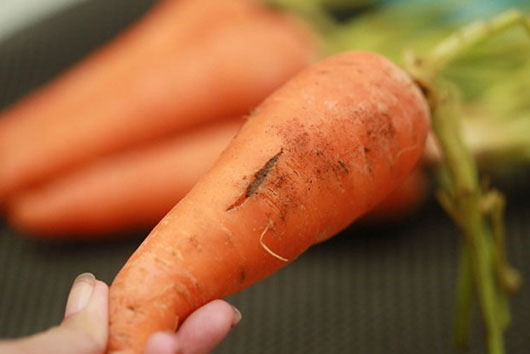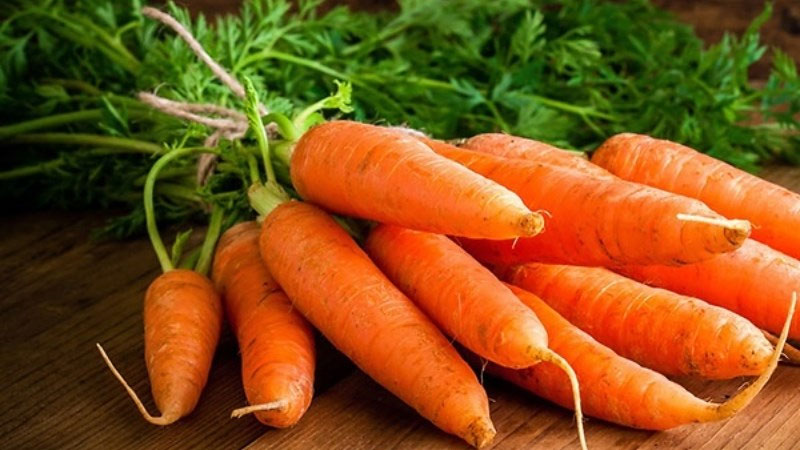How to Choose Carrots
– When buying carrots, opt for those with a deep yellow or orange hue. The darker the color, the higher the content of carotenes and vitamin C.
– Among carrots of similar size, choose the heavier ones as they tend to be moister and more nutritious, indicating freshness. Lighter carrots, on the other hand, may have lost some of their moisture and nutrients over time, so it’s best to avoid them.
– Refrain from purchasing carrots with damaged or deformed surfaces. Bruised carrots are more susceptible to bacterial contamination.
– If you intend to store carrots for an extended period, select those that still have some soil attached to their surfaces. Although these carrots may appear dirtier, they tend to stay fresher longer. Cleaned and peeled carrots, while aesthetically pleasing, are less suitable for long-term storage.

– Steer clear of carrots with wrinkled or soft skin. When shopping for carrots, use your sense of touch to gauge their firmness. A firm carrot with skin that yields slightly when pressed is a sign of freshness. If the carrot feels soft or has wrinkles, it has likely lost moisture and is past its prime.
Stem End of Carrots
Not many people know that the freshness of a carrot can also be determined by examining its stem end. A carrot with a cracked or pitted stem end is likely older and less fresh.
Home cooks are advised to avoid carrots with such stem ends and instead opt for those with intact, smooth stem ends. Additionally, choose carrots of medium size, neither too large nor too small, to avoid immaturity or the potential presence of growth hormones.
Carrot Skin
After assessing the freshness of the stem end, take a closer look at the carrot’s skin. If the surface exhibits cracks, dents, or signs of deterioration, it may have been subjected to rough handling during transportation.

It’s worth noting that carrots with cracks or dents tend to have lost some of their moisture and nutrients. Therefore, it’s advisable to select carrots with intact skin to ensure the highest quality and flavor when cooking.
Source: Khoevadep






































